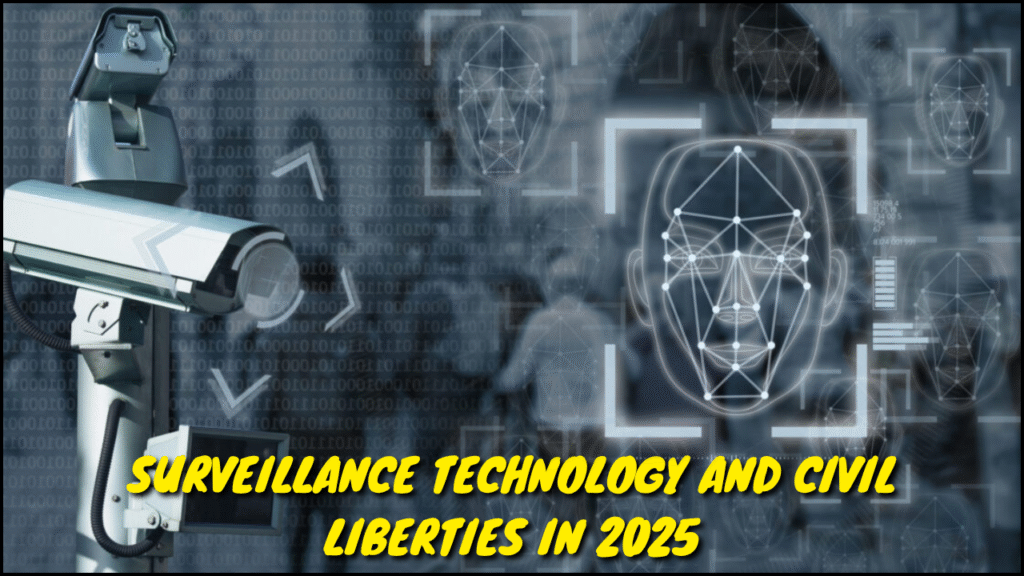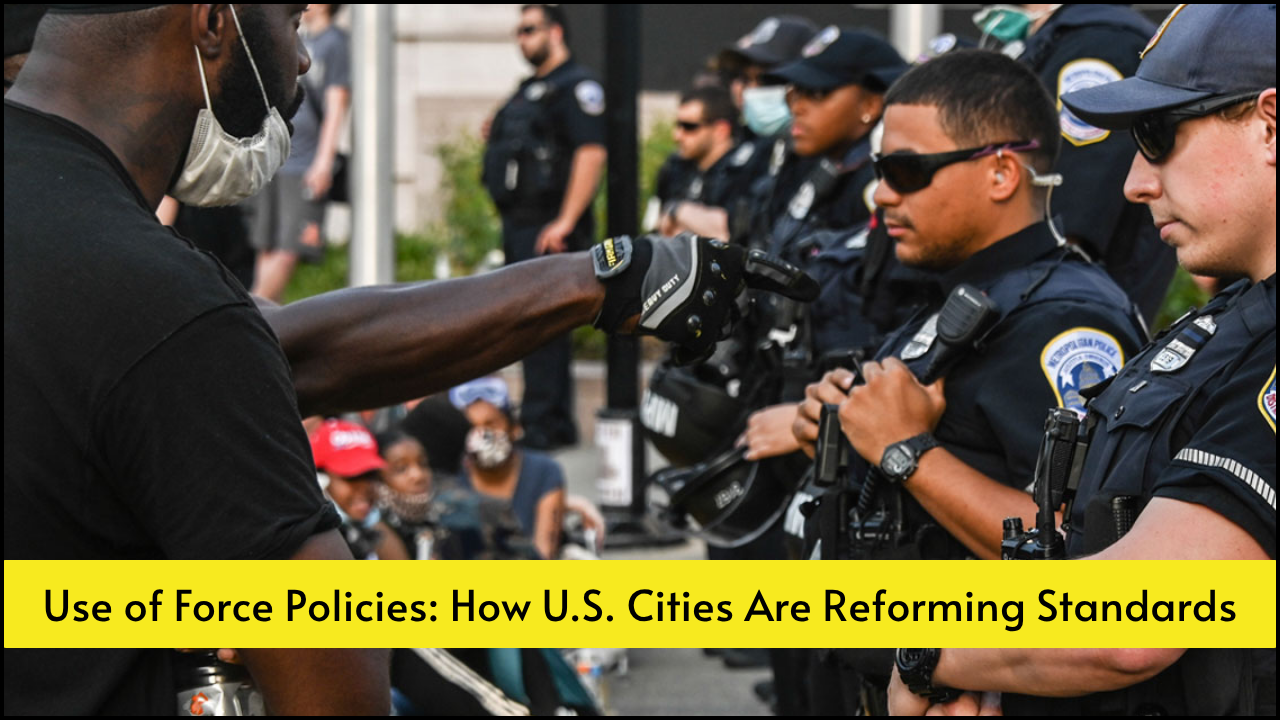
Surveillance technology has evolved rapidly in recent years, transforming how governments, corporations, and individuals monitor and respond to various threats. The year 2025 has brought more sophisticated tools like AI-enabled cameras, predictive analytics, facial recognition, and mass data harvesting systems. These tools promise security and efficiency but raise critical concerns regarding civil liberties. The balance between national security and individual privacy has become a central debate in legal, political, and social spheres. Understanding the implications of these technologies on human rights is essential for framing effective policies and ethical boundaries.
Table of Contents
Key Surveillance Technologies Used in 2025
- Facial Recognition Software
- Widely deployed in public spaces, transport hubs, and private businesses.
- Often powered by artificial intelligence, capable of identifying individuals in real-time.
- Predictive Policing Tools
- Use historical data and machine learning algorithms to predict criminal activity.
- Common in urban police departments across technologically advanced nations.
- Biometric Data Systems
- Include fingerprint scanning, iris recognition, and voiceprint analysis.
- Frequently used in immigration control, workplaces, and mobile devices.
- Internet and Social Media Monitoring
- Algorithms scan online behavior, keywords, and social networks.
- Employed by governments and intelligence agencies for threat detection.
- Drones and Aerial Surveillance
- Monitor protests, gatherings, and rural areas with minimal human intervention.
- Equipped with infrared and zoom-lens technology for high-detail imagery.
- Smart City Infrastructure
- Includes IoT-based surveillance, traffic cams, and behavior-monitoring devices.
- Often integrated with police databases and urban planning tools.
Impact of Surveillance on Civil Liberties
- Right to Privacy
- Mass surveillance erodes the expectation of privacy in both public and private spaces.
- Many systems collect data without user consent or awareness.
- Freedom of Expression
- Individuals may self-censor in fear of being watched or flagged.
- Surveillance of online platforms impacts open discourse and dissent.
- Right to Assembly
- Facial recognition at protests deters participation in peaceful demonstrations.
- Law enforcement may pre-emptively target organizers based on surveillance data.
- Due Process and Presumption of Innocence
- Predictive policing may lead to bias-based targeting.
- Mistaken identity through facial recognition has resulted in wrongful detentions.
- Data Ownership and Consent
- Users often lose control over personal data shared with apps, services, and public systems.
- There is limited transparency on how data is used or stored.
Key Technologies vs Civil Liberties at Risk
| Surveillance Technology | Primary Function | Civil Liberties at Risk |
|---|---|---|
| Facial Recognition | Identify individuals in real-time | Privacy, Freedom of Assembly |
| Predictive Policing | Forecast potential crimes | Due Process, Presumption of Innocence |
| Internet Monitoring | Track digital behavior | Freedom of Speech, Right to Information |
| Biometric Systems | Authenticate identity | Data Ownership, Privacy |
| Smart City Infrastructure | Monitor urban activities | Movement Privacy, Behavioral Autonomy |
| Drone Surveillance | Aerial monitoring of areas | Freedom of Movement, Protest Rights |
Benefits Claimed by Proponents
- Crime Prevention
- Surveillance enables faster crime detection and response.
- Predictive tools allow for the allocation of law enforcement resources.
- Public Safety
- Real-time monitoring assists in disaster response and public crowd control.
- Monitoring traffic and environmental hazards prevents accidents.
- National Security
- Border surveillance and biometric tracking help detect threats.
- Monitoring of suspicious online activity counters terrorism and extremism.
- Efficiency in Governance
- Smart infrastructure improves public service delivery.
- Data collected aids in urban planning and environmental protection.
Public Concerns and Criticisms
- Lack of Oversight
- Surveillance programs often lack independent monitoring mechanisms.
- Governments rarely disclose the full scope of their surveillance operations.
- Technological Bias
- AI algorithms may reflect racial, gender, or socio-economic biases.
- Minority communities are disproportionately surveilled and targeted.
- Opacity of Algorithms
- Predictive tools use black-box algorithms not subject to public scrutiny.
- Citizens have limited recourse when systems make errors.
- Commercial Exploitation
- Private companies may collect and sell user data without accountability.
- Surveillance capitalism thrives on unrestricted data access.
- Legal Gaps
- Many regions still lack comprehensive data protection laws.
- Cross-border data sharing further complicates enforcement.
Global Examples in 2025
| Country | Surveillance Trend | Public Response |
|---|---|---|
| China | Extensive public camera networks with AI | Minimal public dissent due to strict laws |
| United States | Increased predictive policing in urban areas | Civil liberties lawsuits and protests |
| India | National facial recognition database expansion | Concerns from privacy advocates |
| UK | Surveillance in transport and city planning | Demand for independent audit mechanisms |
| Australia | Internet metadata retention laws | Ongoing legal challenges from watchdogs |
Proposed Safeguards and Policy Recommendations
- Legislative Reforms
- Data protection laws should define clear boundaries for surveillance.
- Citizens must have the right to access and correct their data.
- Algorithm Transparency
- Companies and governments must disclose how surveillance algorithms operate.
- Independent audits should verify fairness and accuracy.
- Consent-Based Models
- Surveillance should operate on informed and voluntary consent wherever feasible.
- Opt-out mechanisms must be robust and accessible.
- Independent Oversight Bodies
- Watchdog agencies should regularly review surveillance activities.
- Public reports must be published to ensure accountability.
- Technology Impact Assessments
- Surveillance systems should undergo risk assessments before deployment.
- Civil society groups must be consulted during the planning phase.
Recommended Safeguards and Implementation Areas
| Safeguard | Target Area | Implementation Strategy |
|---|---|---|
| Data Protection Legislation | National Surveillance Programs | Enact GDPR-like frameworks |
| Independent Audit Systems | Facial Recognition & AI Systems | Create public audit commissions |
| Transparency Requirements | Predictive Policing Tools | Mandate open-source or peer-reviewed models |
| Consent Mechanisms | Online Monitoring Tools | Require explicit opt-in from users |
| Ethical Technology Guidelines | Private Sector Surveillance | Develop enforceable ethical AI standards |
Key Takeaways
Surveillance technology in 2025 offers both unprecedented capabilities and profound challenges. Security benefits must be carefully weighed against the erosion of personal freedoms. Civil liberties such as privacy, free speech, and due process are vulnerable when surveillance tools operate without transparency or accountability. Societies must act collectively to establish frameworks that preserve human rights while embracing the advantages of technological advancement. Empowering legal systems, engaging the public, and holding both governments and corporations accountable will ensure that surveillance does not come at the cost of liberty.





